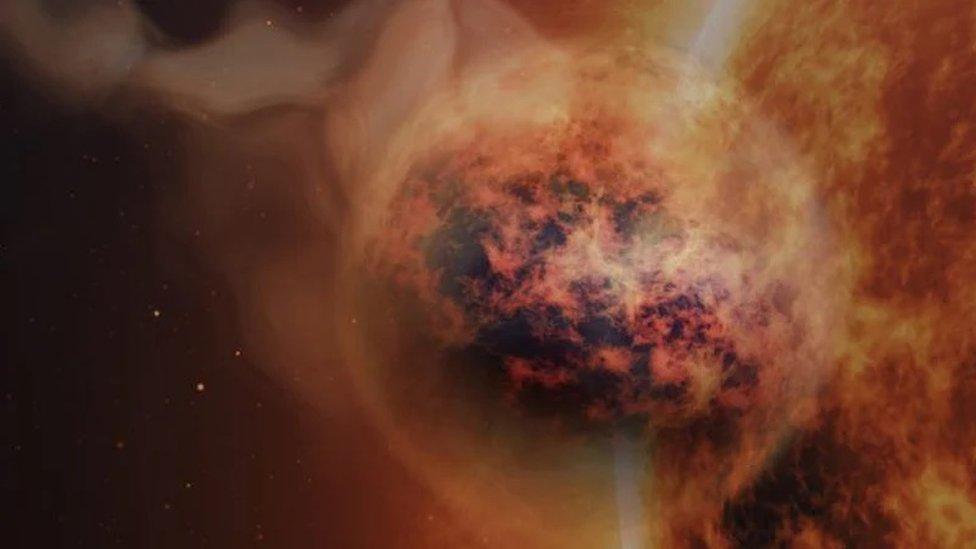Nasa telescope reveals 'candyfloss' planet where it rains sand
- Published
- comments

Nasa has shared detailed images of a "fluffy" planet, found 200 light-years from Earth that has a poisonous atmosphere where it rains sand.
The large planet called WASP-107b, is in orbit around a star in the constellation of Virgo, which can be seen in the night sky.
Data gathered from the James Webb Space Telescope (JWST) has revealed, for the first time, detailed information about the planet, including that it has an atmosphere containing poisonous sulphur dioxide, water vapour and clouds of sand.
Dr Achrene Dyrek, an astronomer and one of the authors of a study at CEA - a government funded organisation in France, said: "we are unravelling new worlds," explaining that the JWST was allowing scientists to learn about the characteristics of planets never seen before.
'Fluffy' atmosphere
Discovered in 2017 it is bigger than 30 Earths.
Astronomers quickly discovered the "candy floss-like" qualities of the planet's atmosphere.
The fluffiness of the planet means astronomers can look roughly 50 times deeper into its atmosphere, compared to how much information can be gathered about similarly-large planets, such as Jupiter in our own solar system.
An artist impression of the planet orbiting its sun
What's its surface like?
On Earth, water evaporates, travels into the air and becomes part of a cloud, then it falls down to earth as rain and the cycle continues. Scientists say the process is similar on WASP-107b, except sand falls instead of rain.
While clouds have been identified on other exoplanets -planets that orbit around other stars - the research is the first time astronomers have been able to identify their chemical composition with absolute certainty.
WATCH: Â鶹ԼÅÄ science editor Rebecca Morelle explains how the James Webb Space Telescope will work
But it was the discovery of sulphur dioxide -which smells like burnt matches - that really surprised experts.
The star that WASP-107b orbits is cooler than our own Sun, meaning it produces fewer high-energy photons. Once high energy photons reach a planet's atmosphere they can cause chemical reactions.
But even though there are fewer photons produced by WASP-107b's star, the planet's "fluffiness" means they're still able to reach deep into the atmosphere, allowing the chemical changes to happen.
If you cannot see the quiz, click here.
"The discovery of clouds of sand, water, and sulphur dioxide on this fluffy exoplanet [by the James Webb Telescope] is a pivotal milestone," said the study's lead author Leen Decin, from KU Leuven, a university in Belgium.
"It reshapes our understanding of planetary formation and evolution, shedding new light on our own Solar System."
- Published4 October 2023
- Published28 December 2021
